The original question was: In the ‘60s sci-fi classic “Fantastic Voyage,” the crew of a submarine crew are shrunk to microscopic size and injected into the body of an injured scientist. I realize that this film is rather sloppy from a scientific point of view, but here’s my question: The shrunken crew members are able to see microscopic objects, like white blood cells. But, assuming you could scale a person down, does having smaller eyes necessarily mean you can see smaller – even microscopic — objects? I can’t make out one-point type, even if it is printed clearly through some high-resolution photographic process. Would I be able to if I were the size of an ant? Would scaling down our eyes give them the same capabilities as a microscope?

The Fantastic Voyage, 1966.
Physicist: Yes and no, but mostly no. This question basically boils down to: if you were scaled down so that tiny things were large compared to you, would they appear large to your now-tiny eyeballs, with all of their microscopic details made macro?
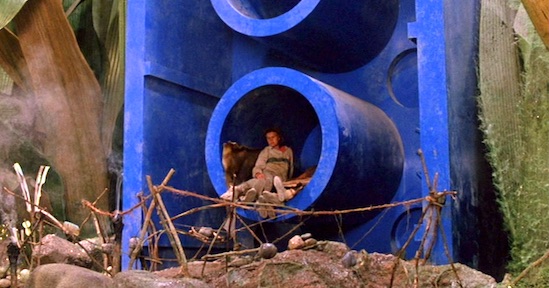
If you were shrunk down until a Lego brick appeared as large as this sound stage at Estudios Churubusco, then would it literally look like this to your tiny eyes?
The answer is yes: as lenses and eyeballs shrink, the world literally does look bigger. But mostly no: the smaller you get, the darker the world will appear and if you’re shrunk to less than about one 10,000th of your size, the lenses in your eyes will cease to work on visible light.
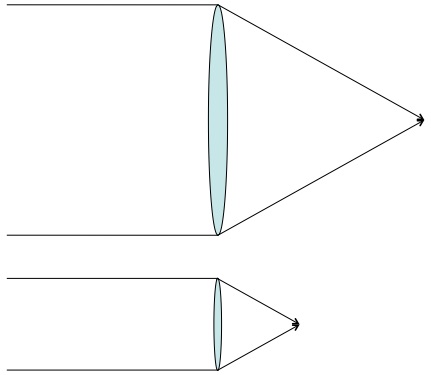
A smaller lens made in the same shape and with the same material will focus light at a proportionately shorter distance. This means that your eyes should continue to work normally; things that are now relatively larger, will appear larger.
The way light interacts with a lens is dictated by the material and the geometry of the lens. Assuming your tiny eyes are the same shape and material as your present eyes (and they always appear to be in the movies), they should work normally. If there’s a cell or Lego brick in front of you and about your size, it will appear to be about your size. You should be able to see smaller details as though the tiny object were literally larger just by walking up to it.
There is an issue. The amount of light bouncing off of tiny things, or flying into tiny eyes, is small. So tiny eyes are always in the dark. Overcoming this problem is why fancy microscopes have light bulbs. Assuming that you, the things you’re interacting with, and the distance to the things you’re interacting with, are all scaled down by the same factor, x (e.g., you’re shrunk and injected into the bloodstream of Dr. Benes), then everything around you will appear to be darker by the inverse square of this factor, x-2. Everything around you would appear to be x times bigger, but the lights would all be x-2 times dimmer.
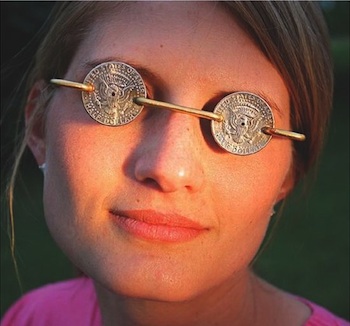
Smaller eyes collect less light. By the time you’re the size of a cell, the amount of light needed for a human eye to see is more than enough to set you on fire.
So if you’re shrunk from being a couple meters tall to being a couple millimeters tall (shrunk by a factor of 103), then the tiny world around you would appear one millionth as bright (decreased by a factor of 10-6). The noon-day Sun would appear about as bright as a full Moon to the milli-you.
In the Fantastic Voyage the ship is shrunk to one micrometer across; a factor of around ten million, 107. The ambient light would need to be one hundred trillion times brighter in order for their environment to have appeared normally lit. If you tried this, you’d see just fine for the fractions of a second before you were cooked. 1014 is a big factor.
Even worse, there’s a diffraction limit brought about by the wave nature of light. Below scales about as large as its wavelength, light starts to act more wavy and less particly. It oozes around corners and ripples around obstacles. In a micro-meter eyeball visible light cannot be relied upon to propagate in a straight line; instead it would splash haphazardly onto your retina. As you shrink through the diffraction limit (assuming there was still enough light to see) the world would get blurrier until it just “blurred out” entirely. Visible light has a wavelength of about half a micrometer and our pupils are around 2 – 5 mm across; about ten thousand times bigger. So, if you were shrunk by a factor of around ten thousand, then you’re eyes will no longer be able to focus incoming light and project it into useful images. You’d basically be in a haze of the average light coming from every direction.
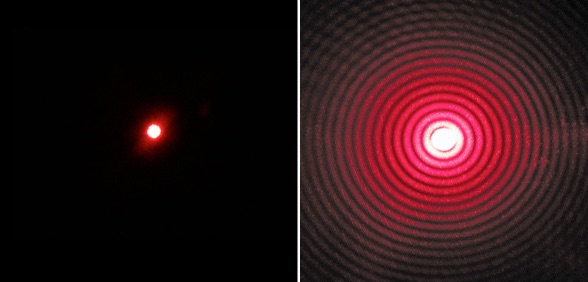
Left: Laser light through a wide aperture. Right: laser light through a very small aperture. The scattering effect of diffraction prevents micrometer scale (or smaller) eyes from being able to form images.
White blood cells are about 10 μm across, or about 20 visible-light-wavelengths. The diffraction limit would start to be an issue when they appear to be about the size of golfballs, and you’d be completely blind when the white blood cells appeared to be about the size of your head.
Despite the difficulties, micrometer sized eyes do exist. But because of the difficulties, they’re crap. Fortunately, the smallest eyes belong to (technically “are”) single celled critters, which are universally too dumb to notice the quality. Synechocystis is cyanobacterium (uses photosynthesis for energy) that’s about 3 micrometers across and uses its entire body as an eyeball. Light passing through the cell focuses a little more in the surface of the cell opposite from the light’s source. This isn’t a trick that’s difficult to evolve; it’s something raindrops do just as well en route to the ground. What makes Synechocystis an “eye” is the fact that it then reacts to that “image”. By swimming away from the bright spot it swims toward the Sun (or any other bright source of light), which is a good move for a critter that eats light. Because of the diffraction limit, this sloppy slightly-brighter-region is about the only image that the tiniest possible eyeball can create and we shouldn’t expect to find eyes much smaller.
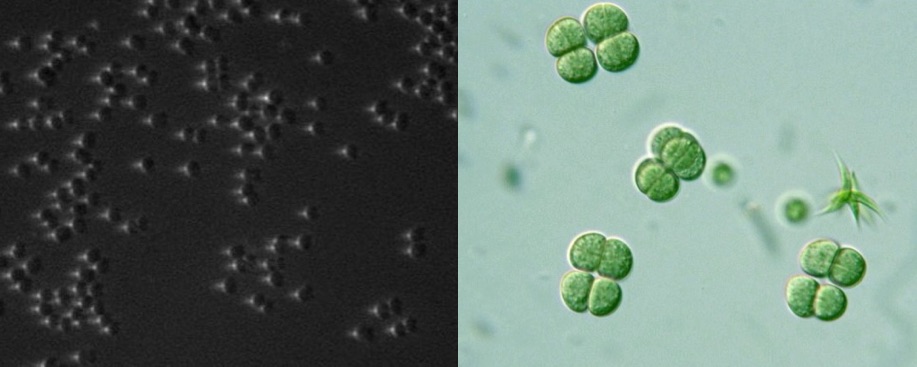
Synechocystis: the smallest, or very nearly the smallest, eyes possible.







Pingback: What If You Could Shrink to the Size of an Atom? | What If Show